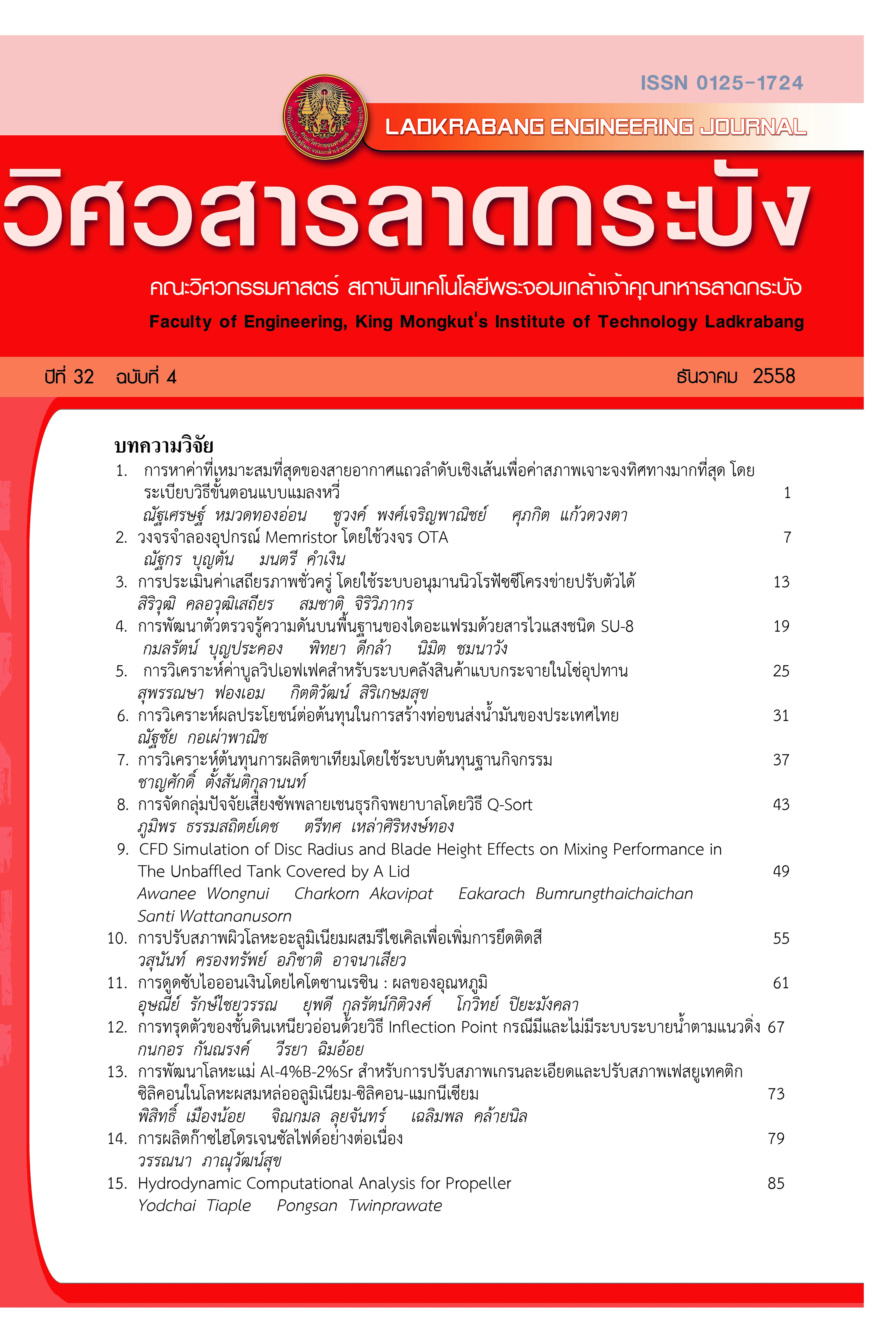Surface Treatment of Recycle Aluminium Alloy for Improvement of Color Adherence Property
Keywords:
Surface Pretreatment,, Recycle Aluminium Alloy,, Color AdherenceAbstract
This research studied the effect of the soaking time of recycle aluminium alloy and the NaOH concentration on surface roughness, weight loss of specimen and color adhesion-pull-off test on recycle aluminium alloy surface to sand mold casting. The testing conditions were soaking time in the range of 1-24 hours and NaOH concentration in the range of 0.75-1.25 molars. The results were compared to the specimen that was not immersed in NaOH. It was found that the pretreatment caused the roughness to develop on recycle aluminium alloy surface at ninth hour after that was decreased. Weight loss of specimen rapidly increased when an increase of soaking time increased at 0-9 hours and later turned steady. The most effective adherence occurred at ninth hour with the concentration at 0.75 molar due to the less metal loss. The area loss was 0.13%. In comparison, the one that was not immersed in NaOH showed the thickness of oxide surface at 7 micrometers and the area loss was at 86.42%.
References
[2] W.W. Peng and et.al., “Experimental and ab initio study of vibrational modes of stressed alumina films formed by oxidation of aluminium alloy under different atmosphere,” Acta Mater, Vol.59, No.7, pp.2723-2730, 2011.
[3] S. Song and F. Placido, “Investigation on initial oxidation kinetics of Al, Ni and Hf metal film surface,” Chinese optics letters, Vol.8, 2010.
[4] W.D. callister and D.G. Rethwisch, “Materials Science and Engineering : An Introduction,” John Wiley and Sons, 6th ed., 2005.
[5] Thai Industrial Standards Institute, “Standard Test Methods for Paints, Varnishes and Related Materials : Adhesion-pull-off Test, No.285-50, pp.21-26, 2006.
Downloads
Published
How to Cite
Issue
Section
License
The published articles are copyrighted by the School of Engineering, King Mongkut's Institute of Technology Ladkrabang.
The statements contained in each article in this academic journal are the personal opinions of each author and are not related to King Mongkut's Institute of Technology Ladkrabang and other faculty members in the institute.
Responsibility for all elements of each article belongs to each author; If there are any mistakes, each author is solely responsible for his own articles.






